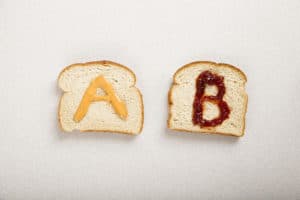
Top 7 Misconceptions About Web Design

Top 7 Misconceptions About Web Design
These days, most of us know just how important having a good website is for a business. Poor web design can turn customers away, and not having any web presence at all will make your business look prehistoric. In contrast, with a good website and website strategy alone, it is much easier to start or grow a robust business.
Still, between websites that scream, “Hello, we were born in the Stone Age,” and those that say, “We’re here to show you the future of humanity,” there is a lot of conflicting information about what makes a good website. Many of this stems from common popular misconceptions about just what web design is, what you should expect out of a web designer, and how to make the very most of your company website.
Let’s take a look at just what these common misconceptions are, so that we can finally put them to rest.
1. “I’ve totally got this!”
For years, web designers have complained about the Nephew Effect, which is when clients think that they could just get their nephew to do their website for free. Because, you know, he’s 13 years old and a tech guru, NBD.
This, of course, leads to what we will politely call lackluster results, for a number of reasons. First, that nephew will hardly be devoted to getting the website done in a timely manner. Because, you know, he’s got school and sports and friends to worry about — and if this is bar and bat mitzvah season, forget it! More seriously, your nephew will at best be learning as he goes, which means he won’t know any of the best practices of web design. While he may be fine at putting together a basic cookie cutter site for you, is he really going to know how to optimize the layout for SEO, or populate content to promote easy user experience, or not overload the design with conflicting images and colors, and register the domain correctly, and ensure your site works across every kind of platform?
We could go on, but you get the gist. Web designers, like all artists, work hard to make their final product look elegant, simple, and easily done; that doesn’t mean it is easy to do, however. It just means we’re good at hiding our work.
Okay, so perhaps you know better than to hand this work off to your nephew, but how about just doing it yourself (hey, you’re relatively tech savvy!) using one of many different template design sites?
There’s certainly no doubt that these sites provide a wealth of nice templates, catered for unique industry needs. And hey, if you’re looking to create a very simple site to show off your portfolio, by all means, dig in. But if you need any kind of customization, good luck trying to figure out the backend for your theme. Perhaps you have a unique product with non-normative requirements to sell in a store, or you want to tweak the image size for your product displays, or you want to edit the theme’s layout, or you want to add in a custom page, or you simply want to make your site look different from the hundreds if not thousands of sites that have chosen your same theme. What are you to do then?
A good web designer will ensure your site has a look and feel that’s unique to you, fitting entirely with your branding, and that you can create the user experience you know your customers want. What’s more, web designers are happy to work with any chosen themes, so these two options are not necessarily mutually exclusive.
So yeah, “We got this…together.”
2. “I built my site…Now, for a sandwich!”
Building your website is an achievement. But it is not a “build it and they will come” kind of situation. In order to get the most out of your investment, you’ll have to work actively and persistently to drive traffic to it. That means search engine optimizing the backend, posting regular content to your blog, building your expertise on other blogs, and possibly purchasing banner ads, running a pay per click (PPC) campaign on Google, or purchasing ads on a social site like Facebook. It also means doing offline marketing, like placing your web address on any printed collaterals such as brochures, business cards, and advertisements.
What’s more, web design, like all technology, moves quickly. What looks great today may look outdated in just a couple of years. While this doesn’t mean that you necessarily need to overhaul your site on a regular basis, it does mean you should be prepared to update it. A website, just like your business as it changes and grows, is never quite done.
So, by all means, go eat that sandwich. Just do a little marketing and traffic driving while you’re chowing down.
3. Space = Bad, Clutter = Good
Alright, maybe none of us would say outright that clutter is good exactly. But, you know, maybe the homepage would look good with a video — actually, make that three videos — and maybe we should go for ten menus up top just to make sure everything is covered, and hey how about a nice email sign up every five scrolls?
See what we mean? It’s very easy to go from “here’s all the necessary information” to information overload. As such, it’s best to design always with a trim mentality in mind. Not only do cleaner websites look better, but they’re also much easier to navigate from a user experience standpoint, which will be crucial in driving more impactful conversions.
4.Users don’t scroll
If you’re in the know about web design at all, you’ve probably heard the old adage that you should never place important information beneath the fold, as users won’t scroll. The rise of infinite scroll and one page sites has solidly put this to rest, as has the increasing popularity of long form content and the ubiquitous use of smartphones and tablets for accessing the web and consuming content. We are, in other words, becoming increasingly comfortable with near constant scrolling, and so the fold really isn’t that big deal anymore.
That said, it certainly can’t hurt to place important information up top. But if the look and the feel of the site demand otherwise, it’s better not to stuff it all in up top.
5. My website is an ad
Your website is an ad, in that it helps establish your branding. What’s more, a poorly designed or outdated website can function as negative advertisement, as it makes your brand look out of touch and inexpert, no matter what your industry or niche (it’s basically like running a political attack ad on yourself, in support of your competitors).
But that doesn’t mean that your website is just a brochure, with basic details about your business and nothing else. Nor does it mean that your website should be filled with flashing, dancing characters that may be entertaining, but don’t tell us much about what it is you do, how you’re different from your competitors, what’s so great about your products, and how visitors can engage more deeply with your brand. Rather, your website should be an interactive experience for your customers. You should provide them with your own expert content and an in-depth, unique look into your company, while also providing them with a platform to share their own stories. In other words, your website should be a platform for conversation, curated by yours truly. It should be the true core at the center of how you sell, how you market, and how you are in the world around you.
6. The logo must be big
We’re big fans of consistent branding over here, and we definitely get why many business owners think their logos should be nice and prominent on their site. But just as we discussed in the previous point, your website is more than just an ad. While your visitors do want to get to know who you are, what your brand is about, and the personality of your brand — all things that a logo can help establish — they also want to use your site. For that, a huge logo isn’t key, and can in fact be obnoxious, an obstruction, and the kind of thing that will send visitors packing. So, by all means, keep the logo on the site, but go for a reasonable size.
7. We’ll just grab a photo off of Google Image Search
Just…no. First, there is the fact that many Google images are poorly shot, or at least are of a low technical quality and will look bad when we blow them up large. Second, there is the fact that you won’t be alone in using this image, and so you won’t be doing much for your branding or to separate yourself from potential competitors.
But, more importantly, you don’t own that image. To take it off of Google image search is to violate an artist’s copyright. That’s not okay on its own, but even if you’re cool with it, you probably won’t be smiling when you get hit with copyright fines totally in the thousands of dollars. Just pay for high quality images. The price is negligible comparatively, and your site will look much more professional in the end.
In Short
These misconceptions may not seem like a big deal, and they’re not…until they damage your brand or inhibit your company growth. So let’s put these misconceptions to rest once and for all, and enjoy a better relationship with our websites!
Ready to get your project started?
Get your free consultation and pricing quote by filling out our quick ‘request a quote’ form. We’ll answer all of your burning questions and help find the right solution for your project.
Request a Quote




